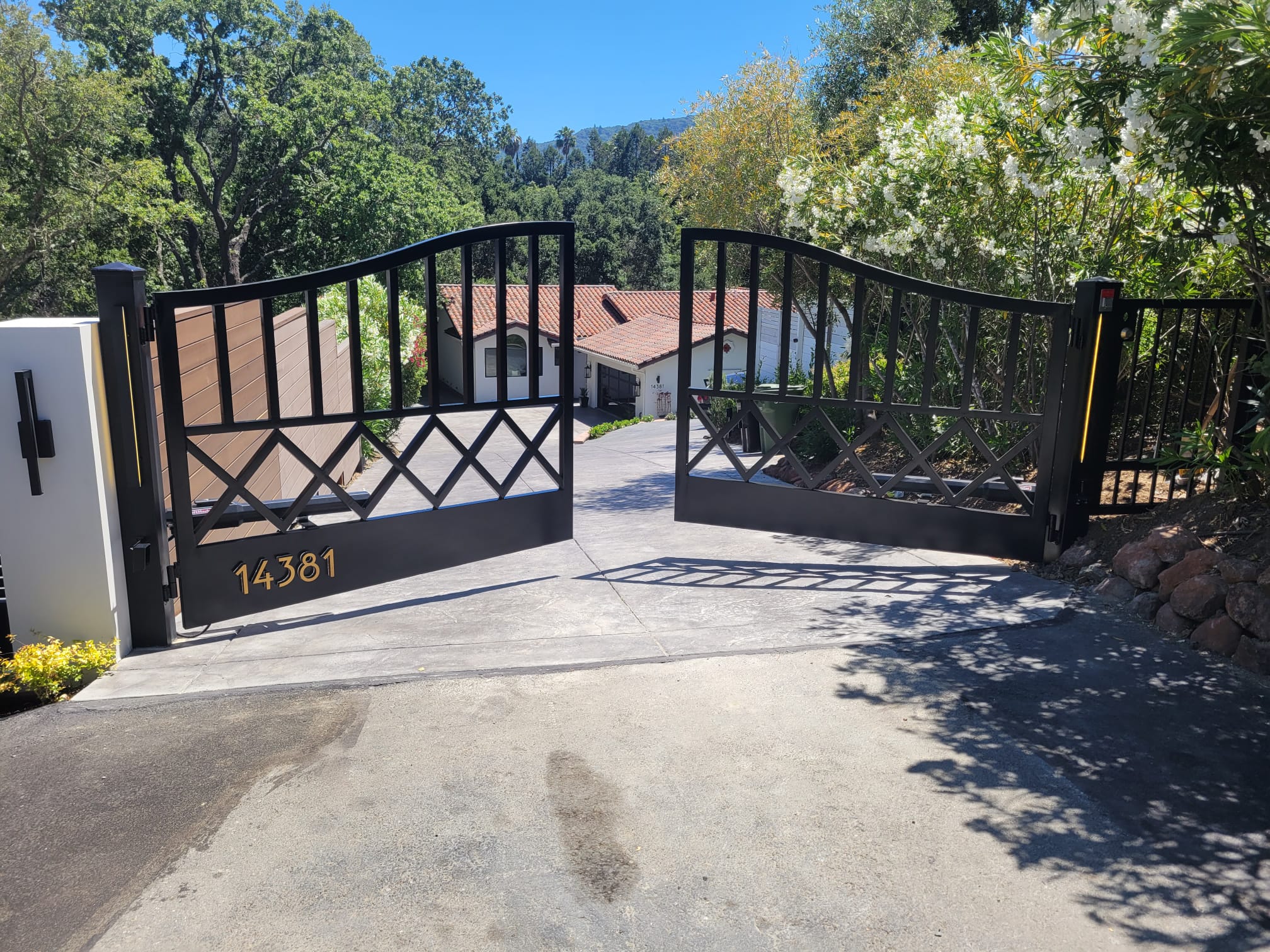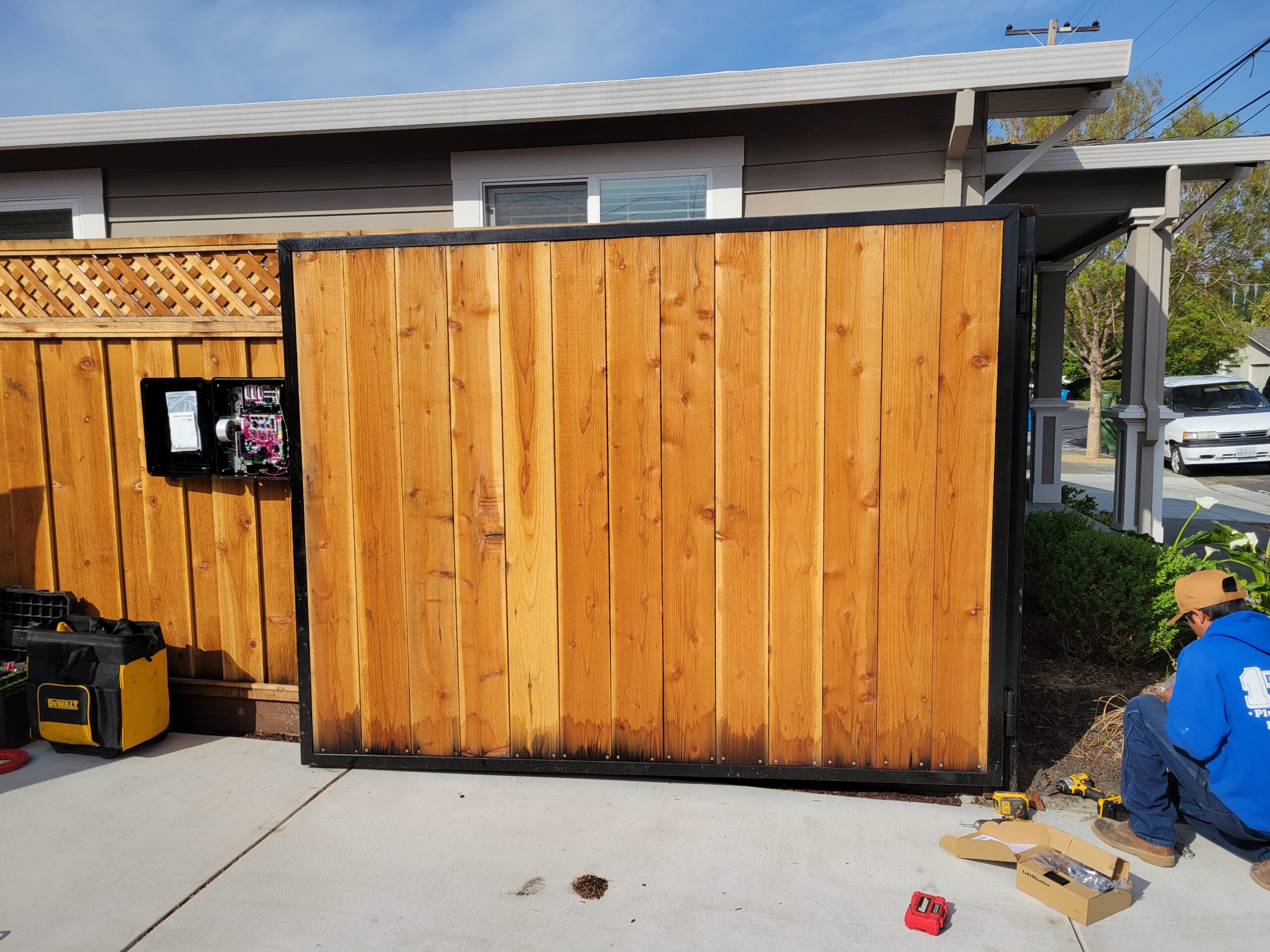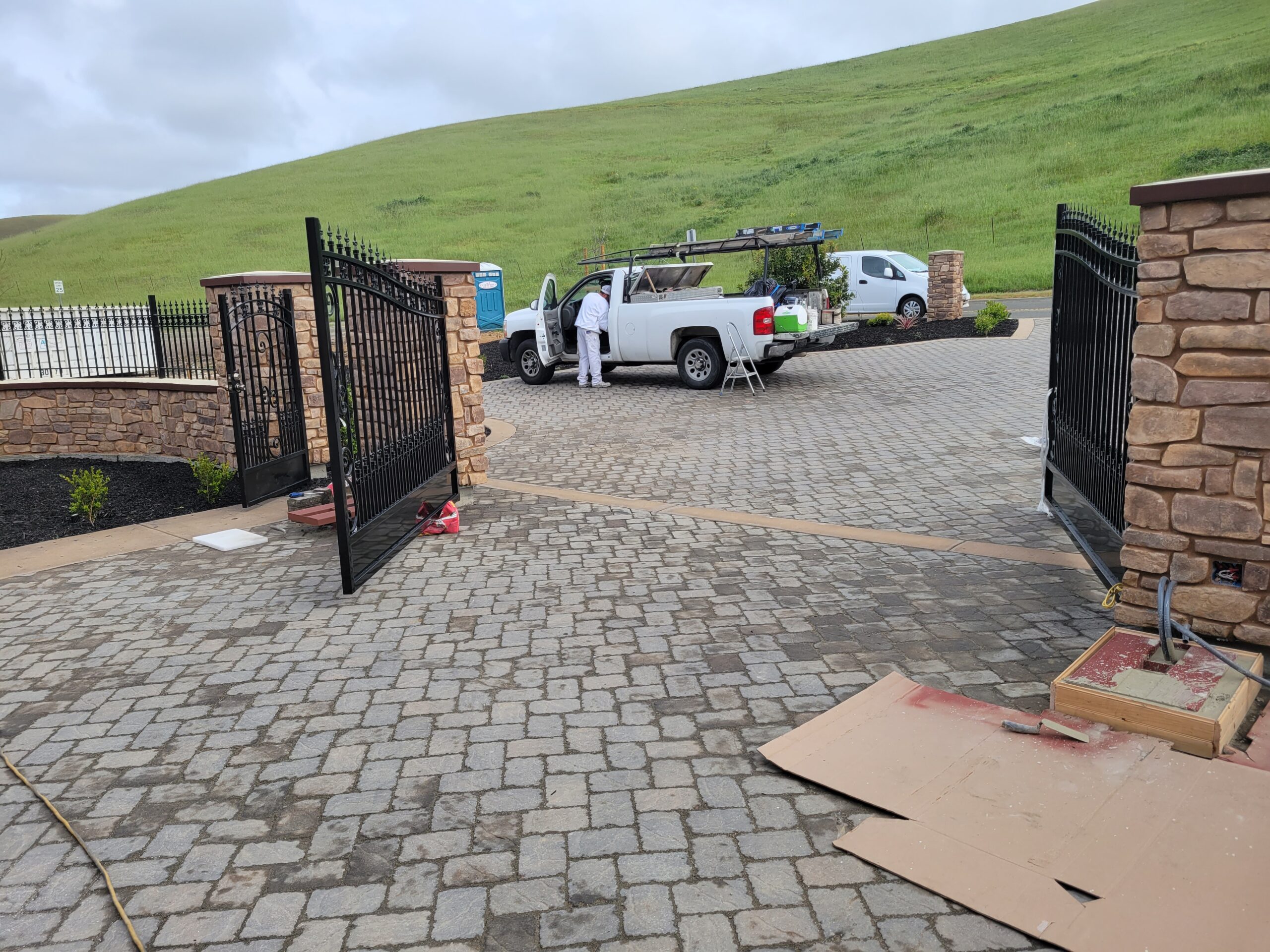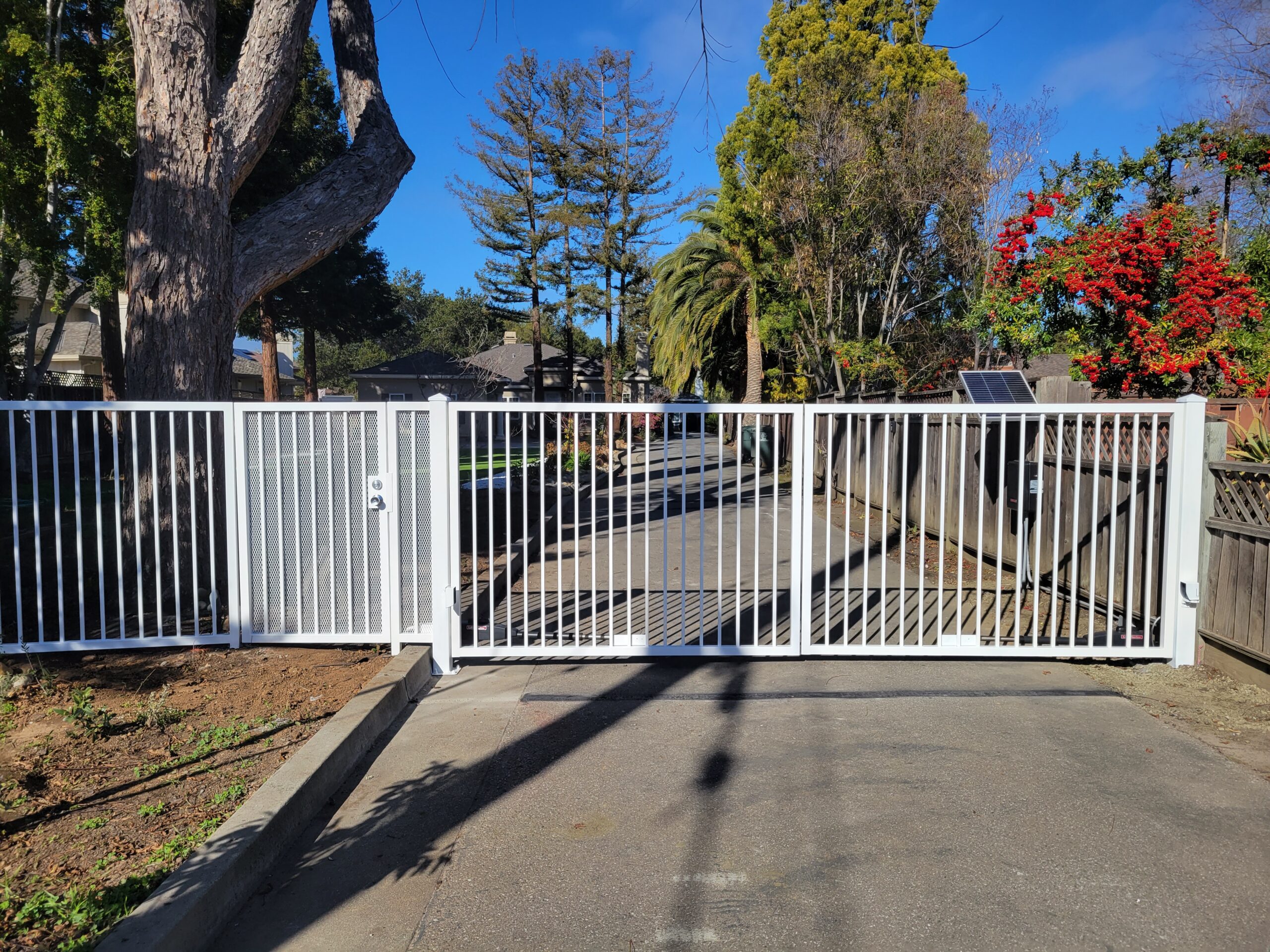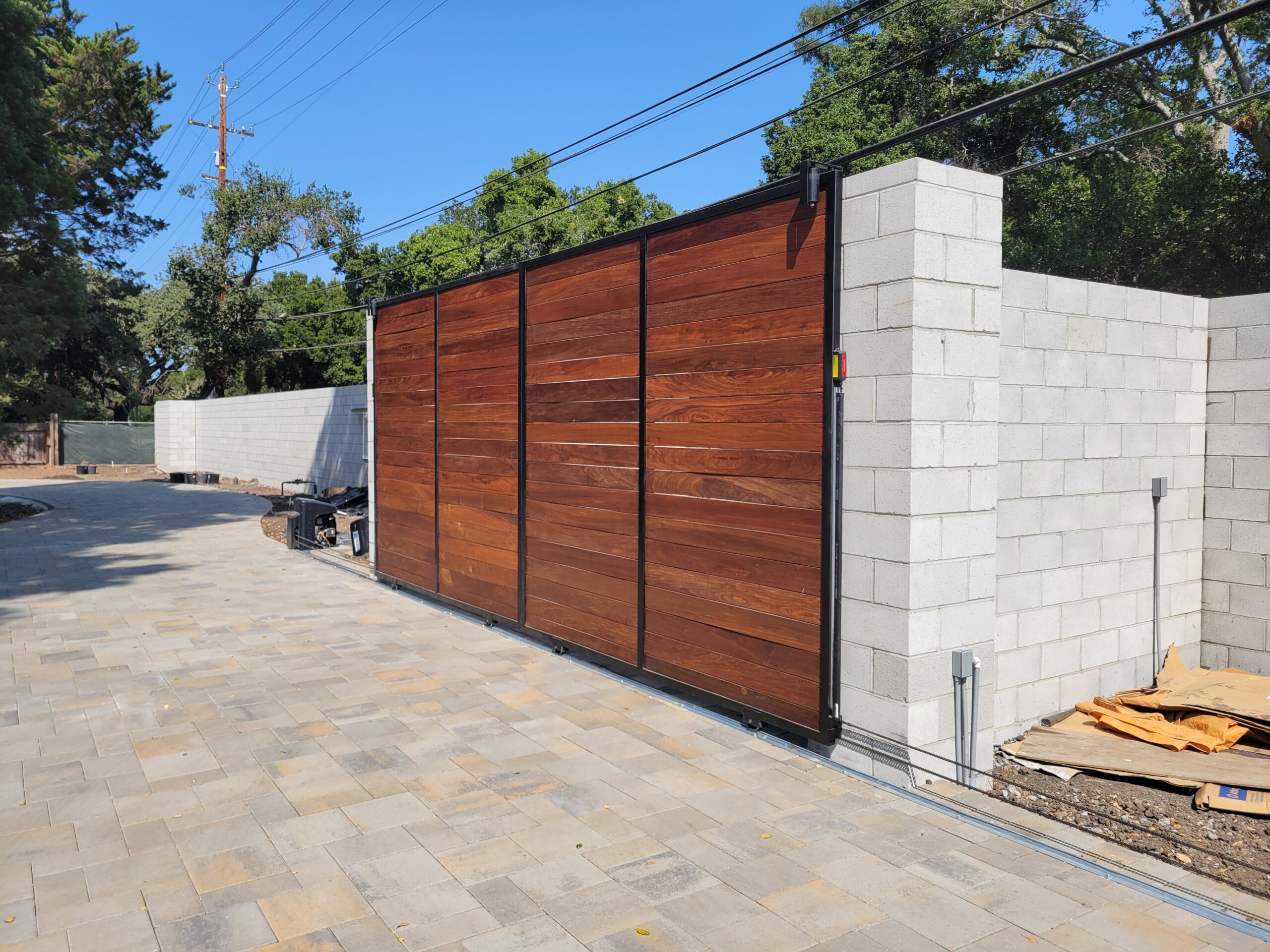Blog & News
Luxury Driveway, Basic Wiring: The Silent Gate Killer in Los Altos Hills

jay jay
Oct 30, 2025
Article, Uncategorized
Gate Repair Los Altos Hills – if you’ve ever needed it, the cause of the problem likely wasn’t the motor, keypad, or even the gate itself. The real issue is often buried underground, hidden inside the electrical wiring.
Across Los Altos Hills, California, homeowners invest thousands in elegant, automated gates that blend security with beauty. Yet, many of these systems fail prematurely because of one simple oversight: poor wiring. At RNA Automatic Gates, we see this problem frequently, and the story almost always follows the same pattern. Let’s take a closer look at how wiring neglect can bring down even the most luxurious gates – and what you can do to stop it.
When Beauty Outpaces Engineering
Luxury homes in Los Altos Hills are built to impress. Long driveways lined with trees, custom steel or wood gates, and sleek automation systems are part of the area’s identity. But while these gates look exceptional, the electrical systems behind them are often surprisingly basic.
Why does this happen? In most cases, builders and landscapers prioritize aesthetics and mechanics while underestimating the complexity of the electrical work. A gate is often seen as a simple motorized entryway. The assumption is that if it moves, the wiring must be fine. In reality, that couldn’t be further from the truth.
A long driveway gate often powers multiple systems at once: security cameras, keypads, safety sensors, intercoms, and Wi-Fi modules. Each of these draws current, and when thin or improperly gauged wire is used, the system slowly starts to degrade. The result is an electrical gate failure waiting to happen. What looks like a “motor issue” is often just a wiring issue that began the day the gate was installed.

The Hidden Weak Link in Luxury Automation
Even the most advanced automation systems rely on a simple electrical truth: if the current can’t travel efficiently, nothing works properly. For many homes in Los Altos Hills, the hidden weak link is the buried cable connecting the gate to the house.
Industry data shows that roughly 70% of gate malfunctions are tied to wiring problems rather than hardware defects. The most common causes include:
- Undersized wire gauge. Many gates are wired with cables that are too thin for the distance they cover. As power travels hundreds of feet, resistance builds, and voltage drops. Over time, this starves the motor and control board.
- Lack of surge protection. Hillside properties are more exposed to electrical fluctuations from storms, lightning, and power grid instability. Without surge protectors, sensitive circuit boards can fail instantly.
- Improper grounding. Weak or inconsistent grounding can create random resets, flickering lights, and even electrical shocks.
- Unsealed conduit. When conduit isn’t sealed properly, water, insects, and rodents can enter and damage insulation or short the wires.
These small oversights compound over time. A gate that worked flawlessly for a year may suddenly start acting up, leaving homeowners puzzled and frustrated.
The $25 Wire That Shut Down a $25,000 Gate
Consider this real case from Los Altos Hills. A homeowner contacted us for los altos gate repair after their automatic gate froze halfway open during a storm. The system was less than two years old and featured premium Italian gate operators and a smart Wi-Fi keypad.
Our diagnosis revealed that the installer had used 16-gauge wire for a 300-foot run from the main power panel to the gate. That wire was simply too thin to deliver steady power over such a long distance. The result was a severe voltage drop that caused the control board to malfunction.
The fix cost less than $100 in parts – a heavier gauge wire rated for long distances – but it restored full functionality immediately. It’s a perfect example of how a $25 decision can cripple a $25,000 gate.
This type of mistake is more common than most people think. Many property owners invest heavily in design and automation but neglect the luxury gate wiring that supports it.
Looking for Affordable Garage & Gate Repairs?
We offer quality service at competitive rates. Call (650) 912-1200 today to schedule your repair.
How Power Distance Impacts Gate Reliability
Power loss over distance is one of the least understood factors in driveway gate power design. The longer the cable run between the power source and the gate, the greater the resistance. That resistance leads to heat buildup and lower voltage at the gate’s end.
Here’s how it looks in practice:
- A 200-foot run might operate fine with 12-gauge wire.
- A 400-foot run often needs 10-gauge wire.
- A 500-foot run can require 8-gauge or even 6-gauge wire to deliver consistent voltage.
If the wrong gauge is used, the system may still operate – but at reduced efficiency. Over time, this results in slower gate motion, system resets, and overheating control boards.
At RNA Automatic Gates, we design installations that account for distance, terrain, and electrical load. Our technicians measure the exact current draw of each component and select wire that ensures the gate operates consistently for years, not just months.
Voltage Drops and False Alarms Explained
Voltage drop gates can cause unpredictable behavior that looks like random malfunctioning. You might see symptoms such as:
- The gate opening partway and then stopping abruptly before closing again.
- Safety sensors triggering unexpectedly, causing the gate to reverse direction.
- Control keypads flickering or restarting without warning.
- The gate motor humming or stalling instead of moving.
These issues can be frustrating because they often seem intermittent. The underlying problem, however, is consistent: uneven voltage reaching the motor or control board. In Los Altos Hills, hilly terrain can make this worse by creating variations in wire resistance and exposure to moisture.
Left untreated, the fluctuating power causes long-term damage to sensitive electronics and eventually results in full system failure.
Diagnosing Intermittent Failures Without Guesswork
Many service technicians rely on trial and error – swapping out parts until the gate starts working again. This wastes time and money. Modern smart gate installation techniques rely on advanced diagnostic tools that eliminate guesswork.
- Voltage logging meters measure power fluctuations under real-world load conditions, pinpointing exactly where drops occur.
- Thermal imaging detects hot spots along wiring routes, showing where resistance is building up.
- Signal integrity testers identify interference or partial breaks inside buried conduit.
Using these methods, electricians can accurately determine whether a problem lies in the wiring, power source, or gate equipment. That means fewer part replacements and faster, more reliable repairs.

The Role of Grounding in Gate Safety
Proper grounding is very important for safety and good performance. If a gate system isn’t grounded the right way, it can start acting up or stop working correctly. Some of the most common signs include:
- Users feeling mild shocks when touching metal components of the gate.
- Indicator lights flickering, especially during wet weather.
- The control board resetting when nearby appliances switch on.
Many grounding problems happen because of shortcuts during installation, like attaching the ground wire to rebar or using rusty connectors. A proper setup uses a real ground rod, corrosion-resistant parts, and strong, secure connections.
In Los Altos Hills, where the soil and elevation change from place to place, good grounding is very important. It keeps the gate system safe, protects users, and helps guard against lightning and power surges.
Protecting Cables from Rodents and Roots
Los Altos Hills is a beautiful place, but it comes with hidden challenges. Underground cables can be harmed by animals, shifting ground, and growing roots. Gophers, squirrels, and rats often chew on wire covers for warmth or nesting. Over time, tree roots can press against or break cables, causing power problems or shorts.
A buried wire without real protection might last only a few years. One bite or crack is enough to stop the whole system from working. That’s why it’s important to do more than just bury the wire – it needs to be properly protected.
The Case for Conduit Upgrades
Installing or upgrading to buried gate conduit dramatically extends the life of a gate’s wiring. Here’s why:
- Sealed conduit prevents moisture and pests from damaging insulation or corroding wires. This is especially important in hillside areas with heavy rain and wildlife activity.
- Accessible junction boxes allow inspection and easy repair without digging up long wire runs. Properly placed boxes make maintenance faster and less expensive.
- Color-coded and labeled wiring helps future technicians quickly identify circuits, reducing confusion and mistakes during servicing.
When performing gate repair in Los Altos Hills, our team at RNA Automatic Gates often recommends conduit upgrades as part of the service. The upfront investment pays off through increased reliability and reduced maintenance costs for years to come.
Smart Power Solutions for Long Driveways
Advances in technology now make it easier to maintain reliable driveway gate power even over long distances. Several modern solutions can eliminate many of the traditional wiring challenges:
- Solar Assist Systems – These setups use solar panels to charge batteries located at the gate, reducing the need for long electrical runs. They’re ideal for remote gates where trenching would be costly.
- Relay Boosters – When control signals weaken over long distances, relay boosters strengthen communication between the house and gate controls, improving reliability.
- Voltage Boosters – These devices maintain steady voltage across long cable lengths, preventing power loss that can cause false alarms or partial movement.
- Wireless Controls – Wi-Fi and cellular-based systems remove the need for extensive low-voltage control lines, minimizing wiring complexity and points of failure.
Each property in Los Altos Hills is unique, so combining these methods often provides the best long-term solution.
Preventing Future Wiring Failures
Stopping electrical problems begins with good planning and regular upkeep. Homeowners and electricians should remember these key steps to prevent expensive wiring issues.
Homeowner Checklist
- Ask your installer for a voltage drop test to be sure the wire can handle the distance.
- Make sure all underground wire is rated for direct burial or placed in sealed conduit.
- Install surge protectors at the main panel and at the gate location.
- Check the grounding rod and all connections once a year, especially after wet seasons.
- Keep plants, roots, and sprinkler lines away from wire paths to prevent damage.
Electrician Checklist
- Choose the right wire size based on distance, voltage, and power use, not just what’s handy.
- Connect all grounds tightly using corrosion-proof fittings.
- Test resistance and insulation before filling in the trench.
- Record where wires, boxes, and conduits are placed for easy maintenance later.
Doing this keeps electricity flowing smoothly and lowers the chance of sudden power loss.
Lessons from the Hills: Design Before Devices
Every impressive gate in Los Altos Hills starts with a vision. But before choosing materials, motors, or access controls, the foundation must be electrical design. The smartest gate begins with smarter electrical planning.
Many property owners focus on aesthetics or the latest automation features without realizing that wiring choices define long-term reliability. A gate’s true luxury lies in its dependability – the quiet confidence that it will open every time, no matter the season or storm.
At RNA Automatic Gates, we start each project by analyzing distance, terrain, and power demands. Our goal is simple: design the wiring first, then build the beauty on top of it. That’s how we deliver gates that perform as elegantly as they look.
Frequently Asked Questions (FAQ)
Why does my gate work sometimes but not always?
Intermittent operation usually indicates voltage drop or a loose connection. Long distances and thin wiring are the most common causes.
Can I use solar power for my gate instead of running long wires?
Yes. A hybrid solar setup can power your gate effectively if paired with properly sized batteries and an efficient control board.
What causes electrical gate failure after rain?
Water getting into unsealed conduit or poor grounding can cause short circuits and make the control board restart or fail. Keeping all conduit sealed and connections dry helps prevent this.
How deep should buried gate conduit be installed?
Conduit should be buried at least 18 inches deep and sealed against water intrusion. In areas with dense roots, deeper trenches provide additional protection.
How often should I have my gate wiring inspected?
A full inspection every two to three years is recommended, or immediately following any major landscape work or severe storm.

